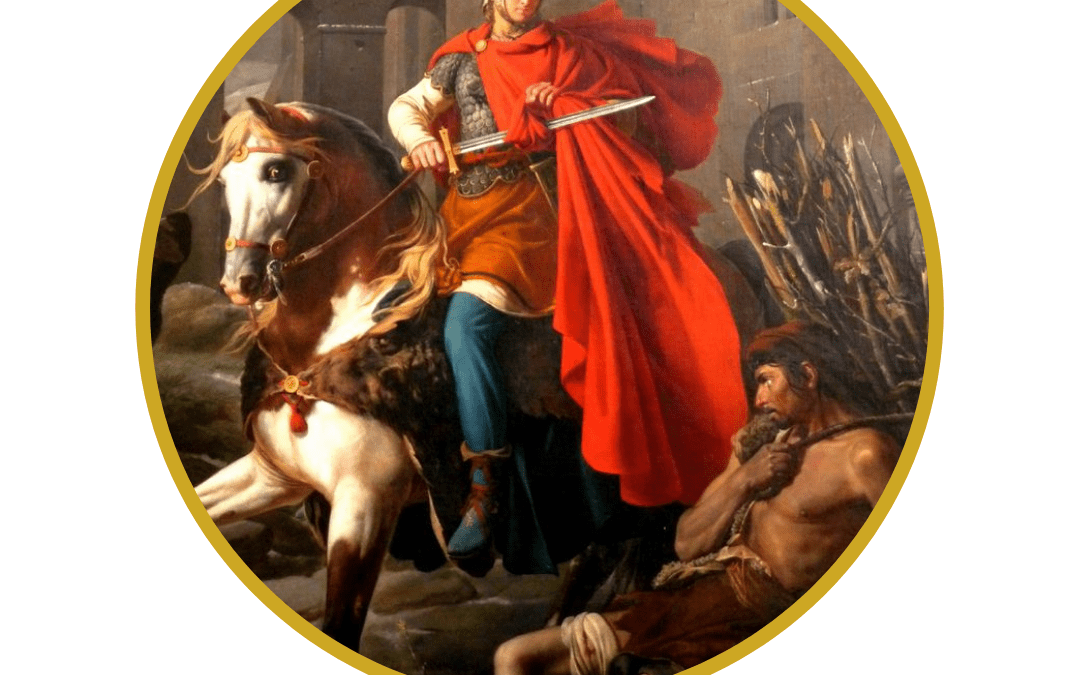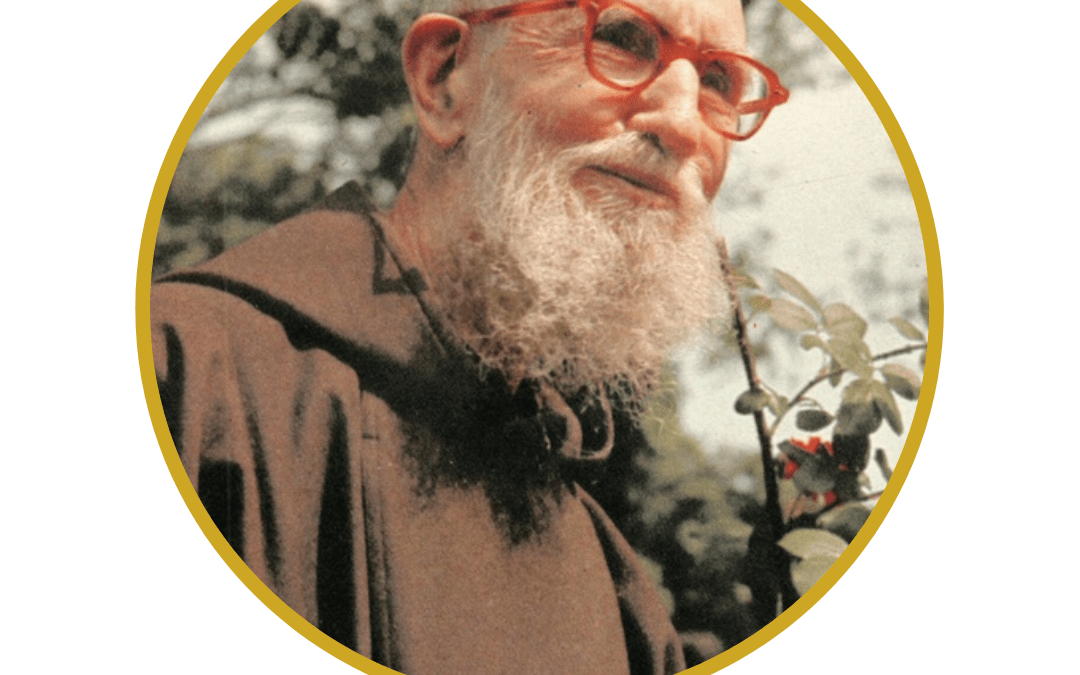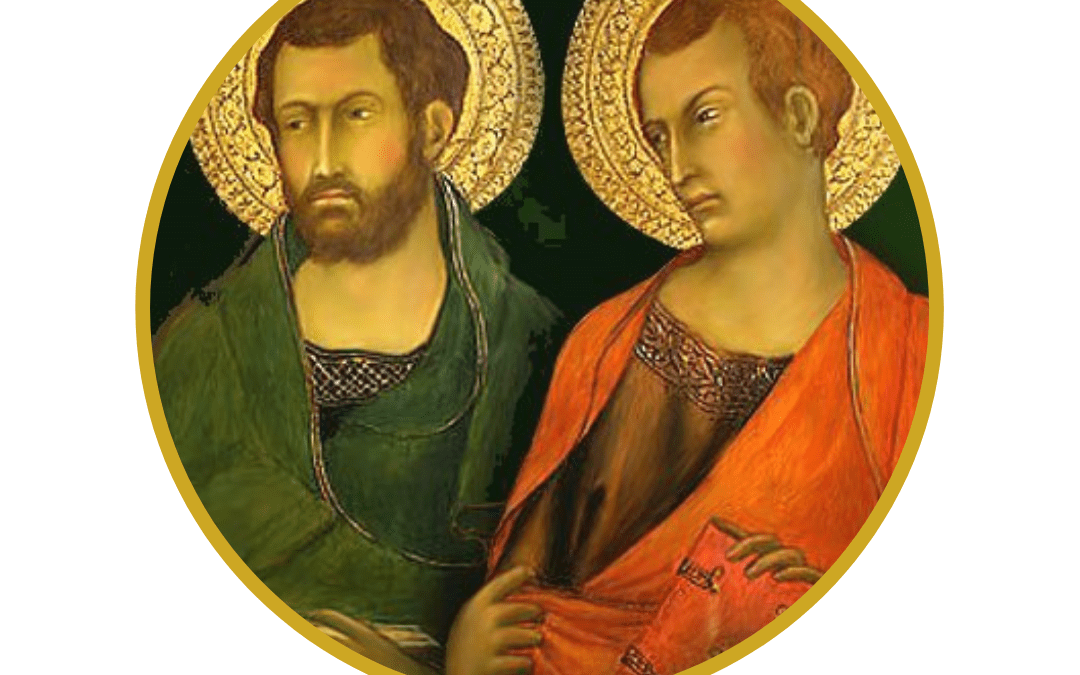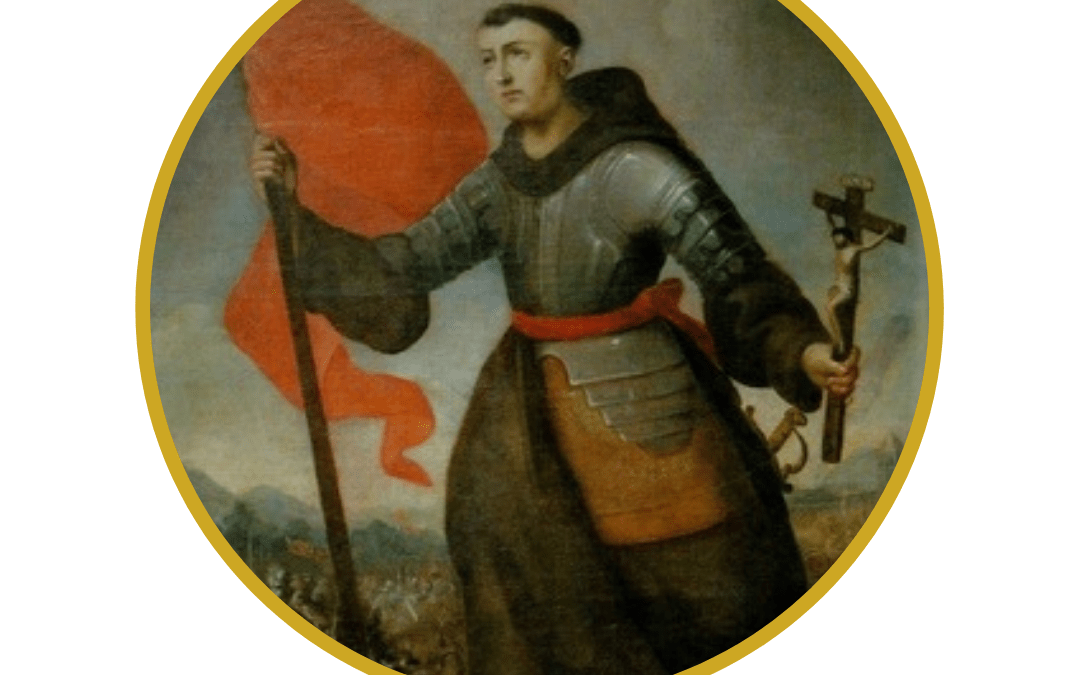
by popadmin | Nov 16, 2020 | CIC Saint Writeups
22 November: Feast of Christ the King (the Solemnity of Our Lord Jesus Christ, King of the Universe). Celebrated on the last Sunday of the liturgical year, this feast day was established by Pope Pius XI in 1925. As a response to the rise of secularization, atheism, and communism in the world and to publicly acknowledge the supremacy of Jesus Christ over all men and nations, Pope Pius XI issued the encyclical Quas Primas. This encyclical added the feast of “Our Lord Jesus Christ the King” to the Church liturgical calendar. It designated the feast to be celebrated on the last Sunday of October. This date, near All Saints’ Day and four weeks before Advent, was carefully chosen. It reminded the people that Jesus Christ is not only King of this world, reigning over the nations; He is also the eternal King, glorified by the saints in heaven, who will one day come to judge humankind. In his encyclical, the pope noted that the world’s disorder was the result of nations rejecting Christ. The pope instructed the faithful to use this annual feast as a time to consecrate themselves to the Sacred Heart of Jesus; tying the celebration to devotion to the Sacred Heart and to the living Christ in the Eucharist. In 1969, Pope Paul VI further enhanced this feast. To emphasize Christ’s universal reign, he changed the feast day name to “Our Lord Jesus Christ, King of the Universe”. He also changed the feast date to the last Sunday in the liturgical year, emphasizing even more strongly the connection between Christ’s kingship and His second advent (coming) to judge the world. Fr. Smith aptly referred to this new feast date as “the crown of Ordinary Time”. The pope also raised this feast to the highest rank of celebration on the Church calendar: that of a solemnity. Today, peace still eludes us; social, political and economic upheaval is still prevalent; and the nations continue to reject the Gospel. The world needs now, more than ever, our Christian witness to Christ the King’s rule over all things.
23 November is the feast day of Blessed Miguel Pro. It is a perfect tie-in to learn the phrase that this Mexican martyr bravely died proclaiming: “Viva Christo Rey!” (“Long live Christ the King!”)
Ideas for celebrating this feast day at home:
- Make crowns! (Or, visit Burger King today!) Here is a link for free printable Christ the King crowns.
- An easy Christ the King craft idea here.
- For a fun baking activity, make Christ the King cookie crowns.
- Set the table as if you were hosting a king for dinner: use cloth napkins, your best dishes. Light candles and fill fancy glasses with champagne or sparkling cider. You could also serve adults a Royal Flush cocktail made with Crown Royal.
- Make “Chicken á la king” for dinner: recipe here.
- Other dinner ideas “fit for a king”– a ham ‘jeweled’ with cloves; a crown roast; a very nice steak; or slow braised beef and vegetables with mashed potatoes. For dessert, a crown cake! (recipes here)
- Sing or listen to the hymn “For Christ the King” by Father Daniel Lord, from 1933. The Hallelujah Chorus from Handel’s Messiah is another resounding piece of music that captures the enthusiasm of this feast day: “King of Kings and Lord of Lords! And He shall reign for ever and ever.”
- Have a family procession in honor of Christ the King – idea here.
- Most importantly, consecrate your family to the Sacred Heart of Jesus: instructions here.
“If to Christ our Lord is given all power in heaven and on earth; if all men, purchased by his precious blood, are by a new right subjected to his dominion; if this power embraces all men, it must be clear that not one of our faculties is exempt from his empire. He must reign in our minds, which should assent with perfect submission and firm belief to revealed truths and to the doctrines of Christ. He must reign in our wills, which should obey the laws and precepts of God. He must reign in our hearts, which should spurn natural desires and love God above all things, and cleave to him alone.” (Quas Primas, Pope Pius XI)

by popadmin | Nov 15, 2020 | CIC Saint Writeups
Born into a wealthy family in Grenoble, France, Rose learned political skills from her father and a love of the poor from her mother. At age 8, it became her dream to go to America and work with Native Americans after hearing a Jesuit missionary speak of his work there. Rose joined the convent of the Visitation nuns against her family’s wishes. When the French Revolution broke out, the convent was closed; so Rose took care of the poor, opened a school for homeless children, and risked her life helping priests in the underground. In 1804 she joined the Religious of the Sacred Heart. At 49 years old, St. Rose finally received permission to travel to St. Louis, Missouri, with four companions, and established the first convent of the Society at St. Charles. Cold, hunger, illness, poverty, and opposition did not diminish Rose’s vision and courage. She opened the first free school west of the Mississippi for Indians and whites. Rose was 71 years old when she finally obtained permission to work among the Potawatomi Indians. With three companions, she traveled by boat and oxcart to Sugar Creek, Kansas. Their convent was a wigwam, they slept on bare ground, and food was coarse. They opened a school for Indian girls and taught them sewing, weaving, and other household arts. Rose thought herself a failure because she could not master English or the Indian language, but her holiness made a deep impression on the Indians. Saint Rose prayed so incessantly that she was on her knees before the tabernacle when the Indians went to sleep and would still be kneeling there when they awoke. Wondering at this, some children put pebbles on the train of her habit one night. Next morning, the pebbles were still there. She hadn’t budged all night. This earned St. Rose the nickname Quahkahkanumad, meaning “She Who Prays Always.” The nuns cared for the sick and prayed with the dying. The Indians were deeply touched by their kindness and souls were won for Christ. Severe winters and lack of proper food sapped her health and Rose was sent back to St. Charles. She spent the last years of her life praying “for her Indians” and the rapidly growing Society she had established. She died at the age of 83, the first missionary nun to the Indians. St. Rose is the patron saint of perseverance amid adversity. She was canonized by St. Pope John Paul II in 1988.
“We cultivate a very small field for Christ, but we love it, knowing that God does not require great achievements but a heart that holds back nothing for self. The truest crosses are those we do not choose ourselves. He who has Jesus has everything.” – Saint Rose Philippine Duchesne
Ideas for celebrating this feast day at home:
- St. Rose taught Indian girls sewing and weaving. Here is an idea for paper weaving with children. OR, you could weave a paper Christmas tree in preparation of the upcoming season! Idea here and here.
- Today’s menu should include Native American Food. This cuisine’s defining theme is that most foods are locally sourced with seasonal ingredients. Some ideas: salmon (or other favorite fish), bison, turkey, or deer meat; veggies, cranberry sauce, corn, grits, succotash, beans, squash, or potatoes; corn bread and pumpkin pie. Click here for a dinner recipe idea.
- Pray to St. Rose Philippine Duchesne for the grace of becoming a prayerful soul. St. Rose was most known for her prayer life; perhaps the best way to honor her today is to spend time in prayer.
- St. Philippine did not convert people by speeches, but by prayer and great charity. Today, pray for someone who is your “enemy” and if possible perform some kindness for this person.

by popadmin | Nov 2, 2020 | CIC Saint Writeups
Born to pagan parents, this son of a veteran was forced at the age of 15 to serve in the army. Martin was baptized a Christian at age 18. He lived more like a monk than a soldier. One of the most famous stories associated with Martin happened while he was in the army: Martin came across a poor, naked beggar at the gates of Amiens who asked alms in Christ’s Name. Martin had nothing with him except his weapons and soldier’s mantle; but he took his sword, cut his own cloak in two, and gave half to the poor man. That night, Christ appeared to him clothed with half a mantle and said, “Martin, the catechumen, has clothed ME with his mantle!” At age 23, Martin refused a war bonus and requested dismissal from the army. He told his commander: “I have served you as a soldier; now let me serve Christ. Give the bounty to those who are going to fight. But I am a soldier of Christ and it is not lawful for me to fight.” He was accused of cowardice and after great difficulty, was discharged. Martin then dedicated himself to God’s work. He traveled to Tours where he began studying under Hilary of Poitiers (a doctor of the Church). Martin was ordained as an exorcist. Martin also became a monk. He established a French monastery near Poitiers. He lived there for 10 years, forming his disciples and preaching throughout the countryside. The people of Tours demanded he become their bishop. Martin did not wish it (was so reluctant that he hid in a barn full of geese which honked loudly and gave him away to the archbishop!). He thus became bishop of Tours and served faithfully. Along with Saint Ambrose, Martin rejected putting heretics to death. He worked against the Arian heresy, paganism, and the Druid religion. He was an extraordinary evangelist and won many to the Christian faith. Once the devil appeared to him and spoke as if he were Christ. Martin recognized the deceit. Three dead persons he raised to life. When he was an old man, Martin fell into a painful fever. Although he longed for Heaven, Martin prayed: “Lord, if your people still need me, I do not refuse the work. Your will be done.” Sick and suffering, he was called to heaven on November 11, 397. Saint Martin of Tours is a patron of the poor, soldiers, horsemen, alcoholics, tailors, and winemakers.
Ideas for celebrating this feast day at home:
- Listen to Fr Smith’s advice (and announcement of retiring as Advent Grinch until 2021)
- St. Martin’s day, also known as “Martinmas” arrives in autumn, the beginning of wine harvest and the time to slaughter winter meat. It is a day for great feasting. The tradition is to have “St. Martin’s goose” and taste the new wine on his feast. Some traditional Martinmas foods are: goose, wine, cakes, figs, fruits, nuts, and puddings.
- A symbol for St. Martin is a horse; horseshoe cookies are also traditional. Recipe here. The catch is that you should break your cookies and give half away, in honor of St. Martin!
- To remind us that we should be a light in the world like St. Martin was (bringing light to the life of a beggar), lanterns are a main tradition of Martinmas. Pull out some camping lanterns or make your own St. Martin paper lanterns. Free download of a St. Martin lantern here. Then, have a family procession or “lantern walk” and sing a traditional lantern song for Martinmas. Or, sing around a bonfire with your family!
- All of these traditions are based on the fact that St. Martin cut his cloak in half and gave it to a poor beggar. The perfect way to celebrate this feast would be to help the needy. Participate in a coat drive (help KofC and SVdP do this at our parish!) or take your unneeded coats/clothing to a local shelter.

by popadmin | Oct 26, 2020 | CIC Saint Writeups
3 November: Blessed Solanus Casey. Born Bernard Francis Casey to Irish immigrants in 1870, he first considered the priesthood after witnessing a brutal murder as a young man. In seminary, he struggled with studies and mastering languages. Because of his poor grades, Blessed Solanus was dismissed. He was sent to a Capuchin Franciscan community. Blessed Solanus was hesitant but heard the Blessed Mother tell him to “go to Detroit” and so he did. He donned the Franciscan habit and chose the name Solanus, after a 17th-century missionary. Franciscan life was a good fit, but academic difficulties caused his superiors to decide he would remain a “simplex priest” (meaning he could not preach or hear confessions). Fr. Solanus was assigned to be the monastery’s porter: the main link from the friars to the outside world. He soon became renowned as “the doorkeeper” who gave gentle counsel and miraculous intercession. He would listen to anyone at any time, day or night. People would line up for blocks just to have a moment with him. He told them to “thank God ahead of time.” One story of his miraculous intercession is told about a friar who came to see Solanus on his way to have emergency dental work done. Fr. Solanus blessed him and told him to trust God. While the friar was at the dentist, a lady who came to visit the monastery brought Fr. Solanus two ice cream cones. Too busy to eat them, Fr. Solanus shoved the cones into his desk drawer, much to the dismay of his secretary. After more than half an hour, the friar returned from the dentist, his tooth found miraculously healthy. He went to thank Father Solanus, who pulled out perfectly frozen ice cream cones from his drawer on the hot summer day, which he offered to the friar to celebrate. Fr. Solanus was also known for quirky habits such as playing his harmonica to the monastery bees; for singing in a loud squeaky voice as he played his violin; and for eating his breakfast all mixed together as a penance– cereal, prune juice, coffee, and milk in the same bowl. Blessed Solanus’ last years were spent suffering severe pain but he never complained. He died on July 31, 1957, and tens of thousands lined up to view his body before burial. Thousands more have sought his miraculous intercession. Blessed Solanus was beatified in 2017. November 3 and July 30 are both dates associated with his feast.
Ideas for celebrating this feast day at home:
- Enjoy ice cream cones today! For a crazy menu twist, try mixing up all your breakfast foods and drinks in the same bowl, like Blessed Solanus did, as a penance.
- Do something for the poor. Solanus is known for starting the Capuchin Soup Kitchen, which to this day cares for Detroit’s poor. Our own parish ministry, St. Vincent de Paul, is teaming up with the Knights of Columbus to provide turkey dinners and warm coats to those in need this holiday season. See the bulletin for specifics on how you can help them take care of the poor in our community.
- Watch a fascinating video on the extraordinary life of Blessed Solanus Casey. Click here to watch for free on FORMED.
- Listen to a reflection from Deacon Gus here.

by popadmin | Oct 25, 2020 | CIC Saint Writeups
28 October: Feast of Saints Simon and Jude. Today the Church celebrates the feast of Saints Simon and Jude whose names occur together in the Canon of the Mass. These Apostles of Jesus were both early missionaries of the Church. Saint Jude, also named Judas Thaddaeus or just Thaddaeus, had the abbreviated forename of “Jude” to be clearly distinguished from Judas Iscariot. Saint Jude was the Apostle who asked the Lord at the Last Supper why He had manifested Himself only to His disciples and not to the whole world (John 14:22). Tradition holds that Saint Jude preached the Gospel in Judea, Samaria, Syria, Mesopotamia and Libya. The Apostles Jude and Bartholomew are believed to have been the first to bring Christianity to Armenia. St. Bridget of Sweden and St. Bernard had visions from God in which they were shown St. Jude as “The Patron Saint of the Impossible.” Saint Simon, also known as Simon the Zealot or Simon the Canaanite, was one of the most obscure among the apostles of Jesus. Not much is known about him; but he is thought to have been a fisherman. Born at Cana in Galilee, St. Simon was surnamed the Zealot because of his affiliation with “the Zealots” (a Jewish political party in opposition to pagan Rome). After Pentecost, Simon preached the Gospel in Persia, Asian Minor, and Egypt. He joined St. Jude in Syria and they were martyred there together. Simon is represented in art with a saw, the instrument of his martyrdom. Ancient tradition says St. Simon was sawed in half and St. Jude was beheaded with an axe. Saint Simon is the patron saint of curriers, sawyers, sawmen and tanners. Saint Jude is the patron saint of desperate situations, lost or impossible causes, hospitals and hospital workers.
Prayer
O God, who by the blessed Apostles have brought us to acknowledge your name, graciously grant, through the intercession of Saints Simon and Jude, that the Church may constantly grow by increase of the peoples who believe in you. Through our Lord Jesus Christ, your Son, who lives and reigns with you in the unity of the Holy Spirit, one God, for ever and ever. Amen. (from The Roman Missal)
Ideas for celebrating this feast day at home:
- An idea for making “Apostle Cookies” can be found here.
- Recipes for Egyptian foods (remembering the work these saints did in Egypt) can be found here. Another recipe for Koshari (an Egyptian comfort food) is here. As a nod to Simon the fisherman, fish would be another fitting menu idea for today.
- Remembering the zeal and missionary work of Saints Jude and Simon, discuss these questions around your family table: What does service to Christ mean? How can each of us serve others in the name of Jesus? What small sacrifices can we make for the happiness of others? Can we work together toward a common good as Simon and Jude did?
- In honor of Saint Jude and his powerful intercession, make a family “Prayer Board” – a place where everyone in the family can put prayer requests in a visible spot. Prayer board ideas here.
- Pray a novena to St. Jude: bring him your biggest, most stressful concerns.
- The word apostle means ‘one sent on a mission’ or ‘a person who first advocates an important belief.’ How can you be a Christian apostle? Use this feast day as a reminder to boldly share your faith; possibly with someone you already know.

by popadmin | Oct 18, 2020 | Uncategorized, CIC Saint Writeups
23 October: Memorial of Saint John of Capistrano, born in 1386 at Capistrano in the Italian Province of the Abruzzi. His father was a German knight and died when John was young. His mother gave him an excellent education. St. John became a lawyer and then the governor of Perugia at the age of 26. When war broke out between Perugia and Malatesta, John tried to achieve peace but became a prisoner of war. During imprisonment, he encountered St. Francis of Assisi in a dream. He then resolved to embrace poverty, chastity, and obedience by joining the Franciscans. His teacher and mentor was St. Bernardine of Siena, known for bold preaching. St. John began preaching as a deacon in 1420, and then as a priest in 1425. The world at the time was in great need: one third of the population had died from the Black Plague and the Church was split in schism. Saint John made great efforts for the Church. He resolved controversy within the Franciscan order. Pope Nicholas V and his successor Callixtus III entrusted important matters to John, including the effort to reunite Eastern and Western Christendom at the Council of Florence. St. John preached to tens of thousands during his missionary travels throughout Italy and Central Europe, and established communities of Franciscan renewal. He healed the sick by making the Sign of the Cross over them. He also wrote extensively against heresies. At the age of 70, he was commissioned by Pope Callixtus III to lead a crusade against the Muslim Turks. He marched at the head of 70,000 Christian soldiers. They won the great battle of Belgrade in 1456 and delivered Europe from the Muslims. He died a few months later from illness. St. John was canonized in 1724 and was praised by St. John Paul II for his “glorious evangelical witness,” as a priest who “gave himself with great generosity for the salvation of souls.” St. John of Capistrano is known as “the soldier saint” and is the patron of military chaplains, jurists and judges.
Ideas for celebrating this feast day at home:
- Father Junipera Serra founded the Mission of San Juan Capistrano in 1776, named for St. John, for mission work to the Indians. The Mission is famous for the tradition of the swallows returning every year. Click here to read more about the Mission. Here is a step-by-step craft to make paper swallows! The history of the swallows at the mission can be found here.
- Here is a fun craft idea for making little Franciscan friars in memory of St. John of Capistrano.
- Today’s feast day dinner should include Italian foods and a dessert such as cupcakes topped with cocktails swords to remember ‘the soldier saint’. If your children own knight or friar costumes, today’s the day to dress up!
- Watch a free video on Formed tracing the origin of the Franciscan order: “The Birth of the Franciscans.”






Recent Comments